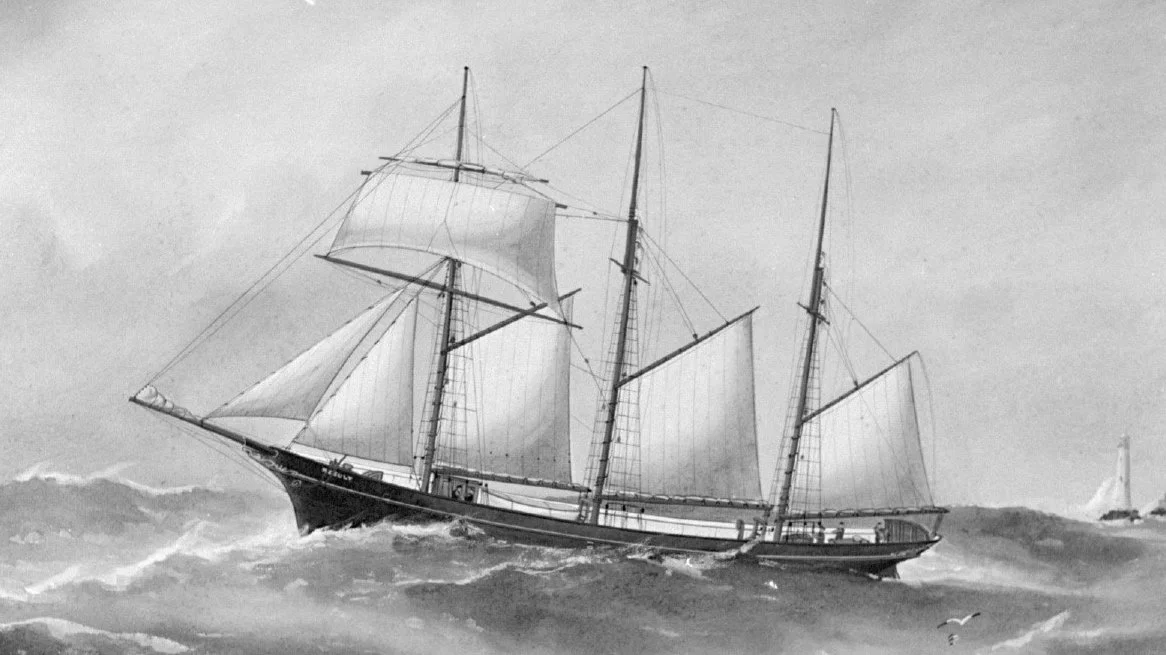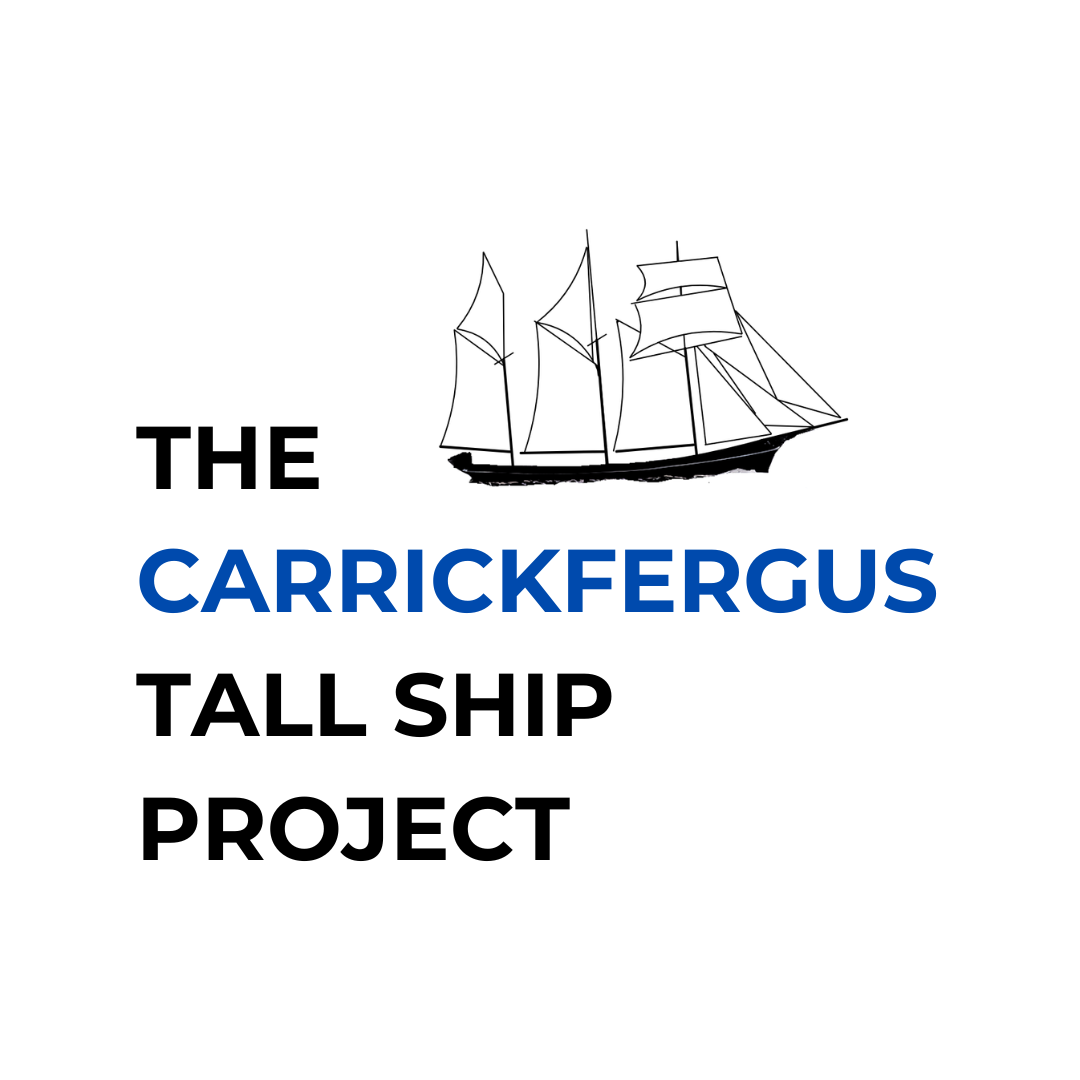
The Result (1893)
The Last Carrickfergus Built Ship
Thomas Ashburner & Co. of Barrow commissions Paul Rodgers, owner of Carrickfergus Shipyard, to build a steel schooner - the Result.
Ashburner, Rodgers, and her future captain, Robert Wright collaborate on the design with the three men aiming to build a functional yet graceful ship.
1892
The Result is launched on 6th January and begins working in the Irish Sea coastal cargo trades. She is a regular sight in the ports of Belfast, Dublin and Connah’s Quay.
1893
The Ashburners retire and hold an auction of their fleet at Connah’s Quay. The Result is bought by a consortium from Braunton, North Devon.
1909
The sailors of North Devon are among the first to experiment with adding auxiliary engines to their vessels. In March the Result is fitted with an engine to improve her profitability.
1914
The First World War has dramatic consequences for the schooner fleet. More than two hundred British and Irish schooners and small sailing ships are lost to enemy action. Though mines are a danger, it was the German submarines (U-boats) that cause most of the losses.
The Result is requisitioned by the Royal Navy to serve as a Q-Ship. In Lowestoft work to convert her is carried out with weaponry hidden on-board to lure in unsuspecting U-Boats and surprise attack them. She encounters three U-Boats and is nearly lost.
1917
During the Second World War the high demand for goods and the loss of merchant ships to U-boats meant that there were fortunes to be made with ships that had survived the war.
The Result is one of only a few Braunton ships to survive the war, and therefore makes her then owners, the Welch family, rather wealthy. In the 1930s Result had been making a profit of around £120 to £140 per year. This dramatically increased during the war years, and in 1942 a profit of £1000 was recorded.
1945
Captain Thomas Welch decides to use some of his new found fortune to modernise the Result. A significant refit takes place which sees the hatches enlarged to facilitate easier cargo handling, a new larger engine fitted and a wheelhouse added on deck.
1946
The Result is chartered to a film company to play the role of the schooner “Flash” in the Carol Reed directed ‘Outcast of the Islands’. The crew are required to stand in for the actors by dressing up and wearing make-up. They are paid an extra £2 per day for this. Despite the good pay the crew were grateful once filming was complete, as they much preferred their ‘day jobs’.
1950
Now operating as a motor vessel with a ketch rig, following the removal of the main mast, the Result is mostly trading around the Channel Islands, France and south coast of England. Captain Peter Welch brings his wife and three children on-board during the summer holidays. The family also take their cat and two dogs with them.
1960s
Work is becoming increasingly difficult to find as the coastal trade declines. It was now cheaper to transport goods overland by road with motor lorries. Result has become the last ship of her type still in sailing in British and Irish waters, but by April 1967 there was not enough cargo available to keep her in work and she is laid up. A thousand-year-old tradition of man trading goods along our coastlines by sail has come to an end.
Captain Peter Welch decides to convert her hold into passenger accommodation, in the hope of gaining charter work, but sadly passes away before the refit is complete. The Result is sailed into Exeter and laid up in the city basin, a forlorn sight with the traditional blue band of mourning painted around her hull. Her working life has ended after 74 years.
1967
Following newspaper articles and local figures raising awareness of the Result’s uncertain future the Ulster Transport Museum purchases her and sails her back to Northern Ireland.
1970
Harland & Wolff shipyard in Belfast are tasked with carrying out restoration works to return the Result to her original 1893 specifications. Stripped of her masts and rigging she is lifted by the iconic Harland & Wolff crane Samson onto the back of a lorry.
On 1st April the Result made her final journey by road to the Ulster Transport Museum in Cultra, County Down, for open air display.
1979
The Ulster Transport Museum and historian Christopher Kenny collaborate to mark the 125th anniversary of Result’s launch with the exhibition “The Last Ulster Schooner”. A number of photographs and stored artefacts from the vessel are displayed for the first time.
The exhibition can still be viewed today in the B Galleries of the Ulster Transport Museum.
2018
The Carrickfergus Tall Ship Project is launched with the aim of conserving the Result and bringing her home to Carrickfergus over 130 years after she was built there.
2024
Image at the top of the page Courtesy of National Museums NI, Ulster Transport Museum Collection


